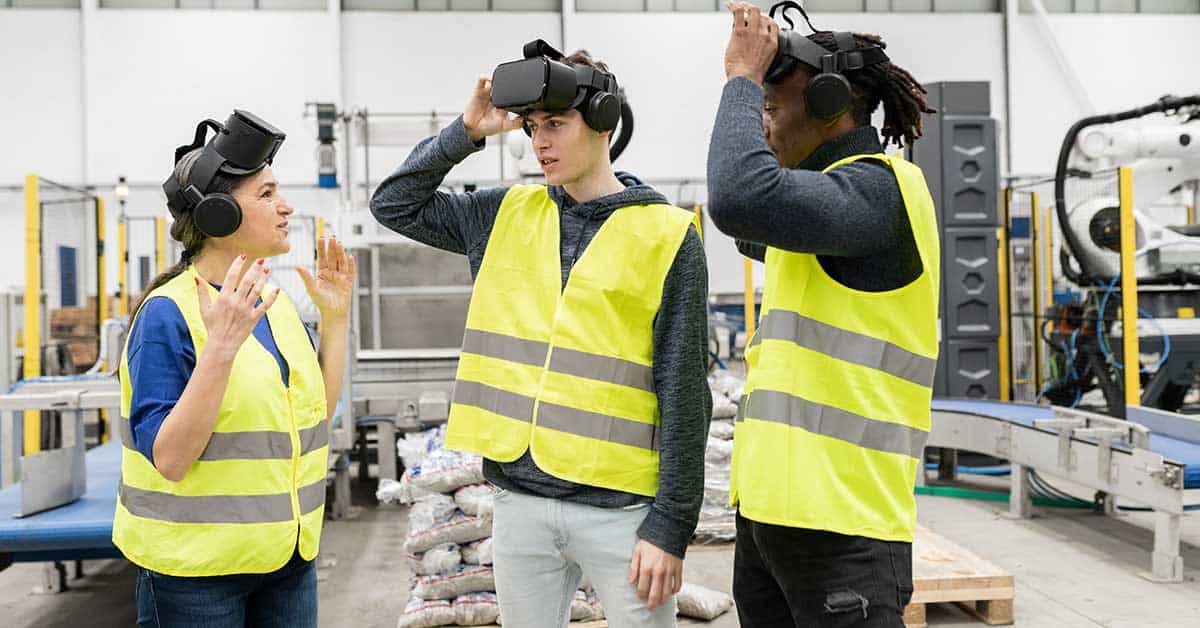Table of Contents
America faces a deeply unsettling paradox: We are reshoring factories and attracting industrial investment, yet we lack the skilled domestic workforce to operate them. The transition to advanced, high-tech manufacturing—semiconductors, clean energy, aerospace—is happening now. But without a rapid and strategic approach to workforce development, these investments may collapse under their own weight.
This blog provides urgent data, compelling case studies, peer-reviewed research, and a national action plan. The time to act is not next year—it’s now.
The Manufacturing Skill Crisis: A National Red Alert
- By 2033, the U.S. will face a shortfall of 1.9 million manufacturing workers, leaving 3.8 million jobs unfilled(The Manufacturing Institute, 2024).
- At any given time, over 500,000 manufacturing positions go unfilled, creating bottlenecks in critical industries (National Association of Manufacturers, 2025).
- Over 20% of American factories report operating below capacity due to labor shortages (McKinsey & Company, 2025).
- Training budgets for skilled trades have dropped 20% in real terms since 2015 (Economic Policy Institute, 2024).
- Root causes include: aging workforce, outdated perceptions of manufacturing, insufficient vocational infrastructure, and lack of employer-educator alignment (American Manufacturing Report, 2025).
Investment without human capital is not growth—it is an illusion.
What the Research Says: Peer-Reviewed Evidence
a) Illinois Regional Skills Gap Study (2024)
This qualitative study identified a growing divide between classroom instruction and practical skill application in Illinois. Employers emphasized technical agility, problem-solving, and industry-specific certifications over traditional credentials (Bradley & Nyugen, 2024).
b) Automation and Generational Mismatch
The ARM Institute (2025) warned that robotics and AI are being deployed faster than the workforce is being trained, leading to dangerous mismatches in generational skill sets (Roberts, Tanaka, & Singh, 2025).
c) Critical Trades Gap
McKinsey’s (2024) U.S. labor analysis shows acute shortages in core trades such as electricians, welders, and CNC machinists, which underpin the broader manufacturing supply chain.
d) Industry 4.0 Skill Deficit
A 2024 review emphasized that the rise of Industry 4.0—automation, cloud, sensors—requires a new framework for workforce education, one not met by current training models (Santos & Kumar, 2024).
e) Virtual Reality Accelerates Learning
New data from a 2025 study showed that immersive VR-based training in manufacturing significantly improved precision and retention in tasks like welding, circuit layout, and robotic programming (Miller & Chen, 2025).
Case Studies: Lessons from the Frontlines
Case Study 1: West Virginia’s Clean Energy Workforce Crisis
Despite over $1 billion in clean-energy investment, factories in southern West Virginia can’t staff technical roles. Workforce participation hovers at 50%, among the lowest in the U.S. One successful initiative created 12-week pre-apprenticeships with hands-on instruction, boosting job placement rates by 400%. But these programs remain underfunded and under-scaled.
Case Study 2: TSMC Semiconductor Plant, Phoenix, Arizona
The $40 billion Taiwan Semiconductor Manufacturing Company (TSMC) fab faced major delays due to the shortage of high-precision technicians and construction engineers. The company had to fly in workers from Taiwan to compensate, setting back U.S. production timelines and revealing the deep structural skills gap in American advanced manufacturing.
Case Study 3: UT Southern–Magotteaux Industrial Partnership
This public university partnered with Magotteaux, a Belgian materials manufacturer, to train local workers in ceramic and metal casting. Students enrolled in modular training received real-time industry mentorship, and 90% secured employment within six months of graduation. This program stands as a model for localized, employer-led workforce pipelines.
The Stakes: Why This Is a Crisis
- Economic Loss: Millions of unfilled jobs translate to hundreds of billions in lost GDP annually.
- National Security: Semiconductor and defense manufacturing require U.S.-based, U.S-trained technicians and engineers.
- Global Competition: Nations like Germany, South Korea, and China are already scaling industrial education faster and more effectively.
Tariffs and reshoring incentives will not matter if we cannot staff and operate the industries we build.
What We Must Do Next: A National Blueprint
Strategy Impact Apprenticeships & Modular Credentials | Expand and fund stackable programs like those used in FAME USA and UT Southern. | Job readiness improves within 12 months.
Immersive Training & VR | Use virtual reality to teach technical competencies in less time. | Boosts retention and performance by 30–50%.
Adult Learning Investments | Extend Pell Grants and offer wage subsidies for adults in training. | Increases access for veterans, parents, and career changers.
Early Pathways in K–12 | Integrate technical literacy, robotics, and trade skills into grades 6–12. | Normalizes trades and builds early pipelines.
Employer Incentives | Offer tax credits to companies that provide paid training and job guarantees. | Transfers accountability and cost-sharing to business.
National Workforce Councils | Federal and state partnerships with industry leaders to ensure alignment. | Improves scalability, agility, and cross-sector collaboration.
Call to Action: The Clock Is Ticking
America is pouring billions into physical infrastructure—but without skilled people to run it, we are building empty shells. We must:
- Federal Action: Allocate $10 billion annually to workforce retraining and technical education.
- State Action: Mandate community college and industry partnerships for certification-based employment pipelines.
- Business Action: Shift hiring models from degree-first to skill-first. Invest in immersive, onsite training solutions.
- Educational Action: Redesign high school and post-secondary curriculums around job-ready, employer-verified skills.
The factories of the future will not run on ambition or capital alone—they will run on skill, training, and a domestic workforce built for the modern world.
References (APA 7th Edition)
Bradley, M., & Nyugen, T. (2024). Bridging the theory-practice divide in regional manufacturing: A qualitative study. Journal of Applied Workforce Research, 18(1), 22–39.
Miller, L., & Chen, J. (2025). The impact of immersive VR-based training in advanced manufacturing apprenticeships. Technology in Education and Industry, 11(2), 105–124.
McKinsey & Company. (2024). Closing the skilled trades gap: Labor force challenges and strategic solutions.
Roberts, K., Tanaka, M., & Singh, A. (2025). Accelerating the automation workforce transition. Journal of Advanced Robotics and Human Systems, 7(1), 44–60.
Santos, R., & Kumar, V. (2024). Workforce transformation in the Fourth Industrial Revolution: Challenges and frameworks. International Journal of Industrial Development, 36(3), 88–112.
The Manufacturing Institute. (2024). 2024 Workforce Report: Closing the Manufacturing Skills Gap.




